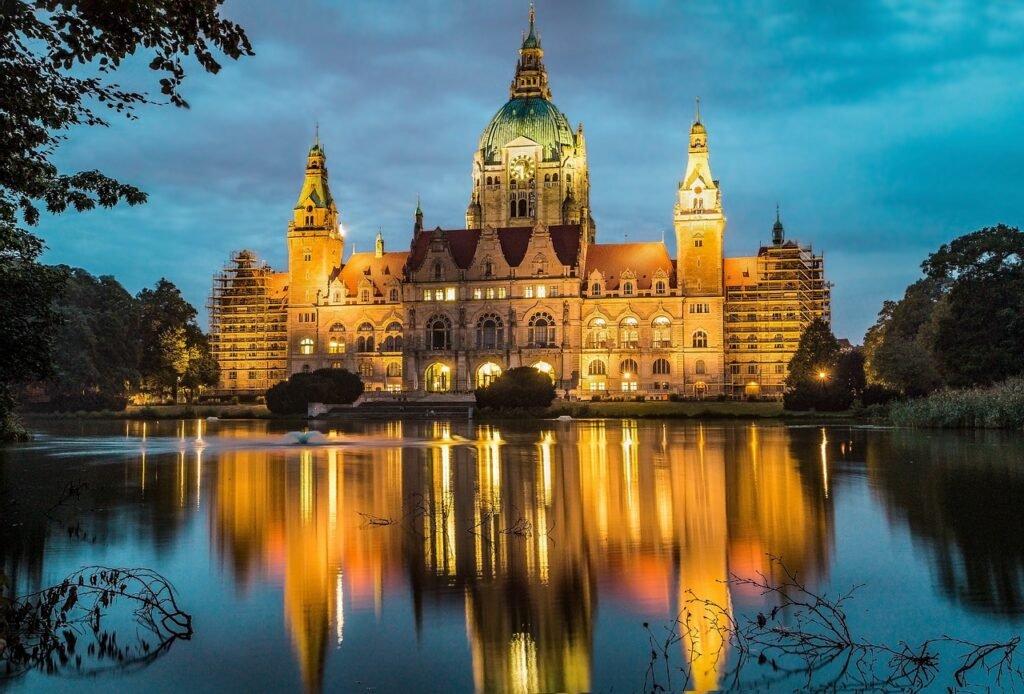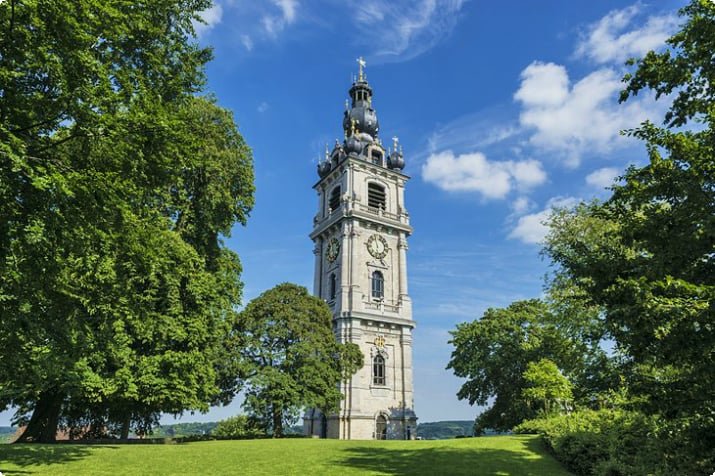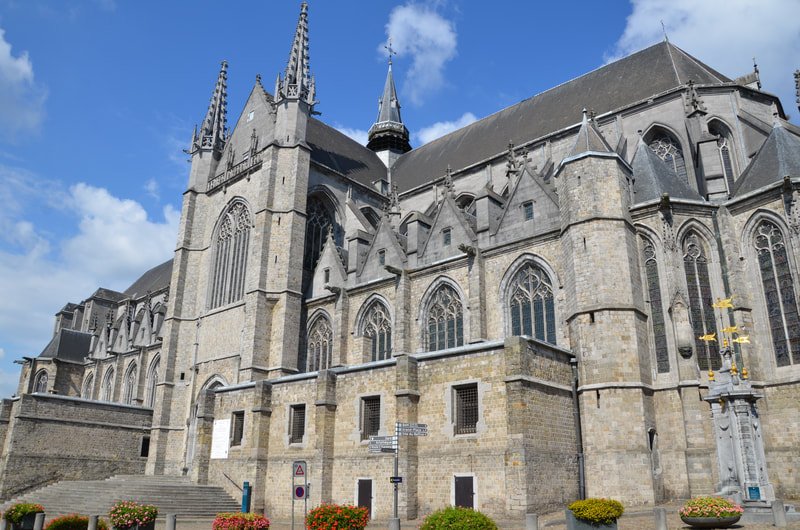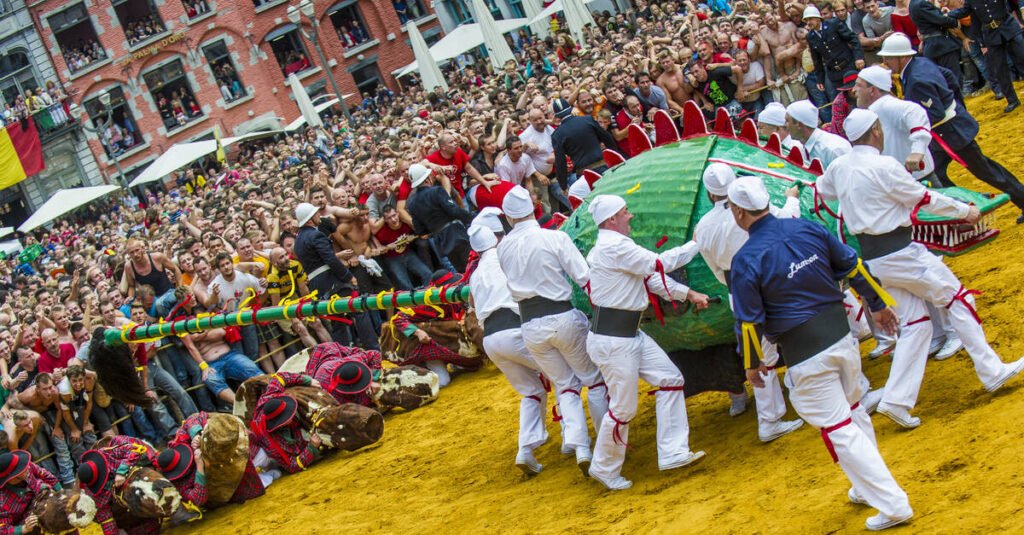Mons – a city in southern Belgium, in the Walloon Region, the administrative seat of the province of Hainaut and the district of Mons. It lies on the border with France, on January 1, 2024, it had 96,358 inhabitants in an area of 147.56 km². Mons is the center of the Borinage mining industry.

- Mons Town Hall – the city centre is located on the vast Main Square, dominated by the impressive 15th-century town hall. The figurine of a monkey, the so-called Grand Garde, placed on its façade is the mascot of the residents. The building was built in the Gothic style, between 1458 and 1477. The belfry located on its top was added between 1717 and 1718. The bronze balustrade, depicting St. George and the dragon, is the work of a French artist from 2006. It is worth entering the very interesting courtyard of the town hall. Inside the building there is the Wedding Hall with an Italian ceiling, the Council Chamber with a marble fireplace, the Portrait Hall and the Gothic Hall, decorated in the style of the period. All of these rooms can only be visited with a guide, after prior reservation.

- Belfry – in 1999, it was added to the UNESCO World Heritage List. This is the only Baroque belfry that has survived in Belgium to this day, and was built between 1661 and 1672. Built on a hill, it provides a magnificent viewpoint over the panorama of Mons. The facade of the building is made of blue stone. Inside, 365 steps lead to the top of the belfry, which houses 49 bells that make up the carillon.

- Saint Waltrude Church – construction of the current collegiate church began in 1450. The church, laid out on a Latin cross plan, surrounded by 29 chapels, belonged to the canonesses of Saint Waltrude. In 1549, construction began on a tower, which was never completed. The interior of the church houses many magnificent monuments. In the treasury, you can admire one of the most beautiful collections of jewelry in Belgium. The church houses two reliquaries, one containing the body of Saint Waltrude, the other her head. The oldest stained glass windows, especially the five windows in the apse, were donated to the church in 1510 by Maximilian I of Habsburg. The most interesting white stone sculptures depict Saint Michael pushing Satan (15th century) and Saint Waltrude (16th century). Attention is drawn to the golden carriage, painted and gilded in the style of Louis XVI (1780-1781), on which the reliquary of St. Waltrude is transported on Whitsunday.

- Francois Duesberg Museum – housed in a historic building from the late 19th century, the museum houses collections donated to the city by the Duesberg family of collectors. It presents art from 1775-1825. The clock collection (1795-1815), one of the most prestigious in the world, contains some truly exceptional exhibits, including the extraordinary Paul et Virgine clock, commissioned in 1802 by Napoleon Bonaparte himself. The magnificent porcelain collection, from the best manufacturers from Paris and Brussels, exquisite gold products, and antique jewelry are also impressive.

- La Ducasse Festival – a popular festival held on Trinity Sunday, recognized by UNESCO in 2005 as a Masterpiece of the Oral and Intangible Heritage of Humanity. The event begins with a procession during which the reliquary of St. Waltrude is carried around the city in a gilded 18th-century carriage. The procession is followed by the Lumeçon, a staged fight between St. George and the dragon. The celebration, which is the pride of Mons, attracts thousands of tourists to the city every year.

Throughout its history, Mons has been a strategic military hub, attracting Romans, Gauls and Franks. For example, Julius Caesar set up a military camp on the hill at Mons during the Gallic Wars. More recently, the Mons area was a battlefield in both world wars. Monuments, heritage and culture have helped heal the scars.
